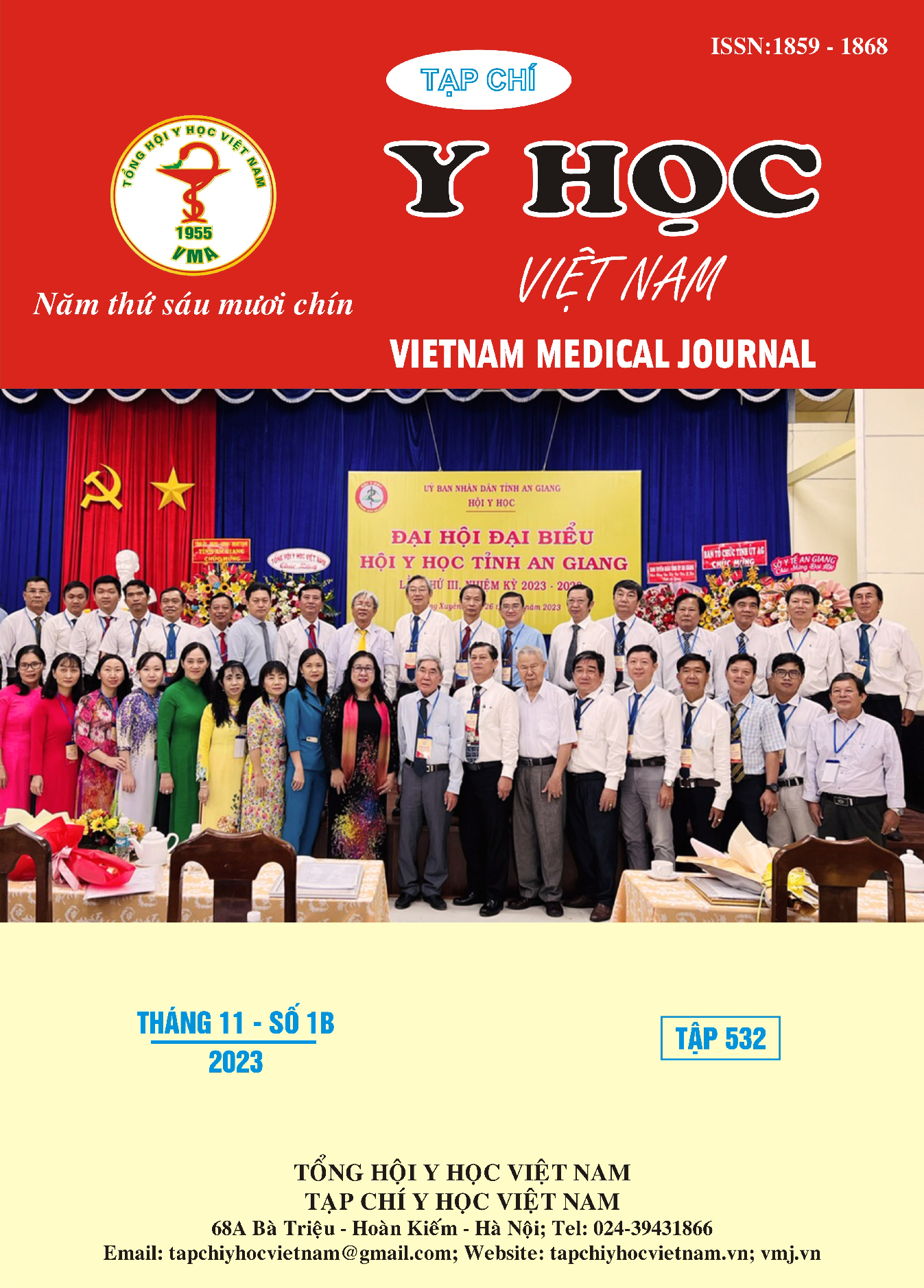CLINICAL, CT SCANNER OF CHRONIC RHINOSINUSITIS WITH NASAL POLYPS AND COMPARE WITH EPOS 2020 CLASSIFICATION OF PATHOLOGICAL CHARACTERISTICS
Main Article Content
Abstract
Objective: Describe clinical, CT scanner of CRSwNP and compare with EPOS 2020 classification of pathological characteristics. Methods: case series report. Results: Through the study of 123 cases of CRSwNP at the Rhinology Department of the Otorhinolaryngology Hospital of Vietnam from January 2022 to December 2022, we initially drew some conclusions as follows: Eosinophil in mucosa was found in 98/123 patients,including 35/98 patients had mixed neutrophil in mucosa. For these patients, the pre-operative symptom score, endoscopic score, and CT scan score were more severe and the post-operative symptom improvement was slower than patients had predominant presence of neutrophil in mucosa. There is a correlation between eosinophil in blood and in mucosa. Conclusion: CRSwNP that do not respond to medical therapy often have a predominant presence of eosinophil in mucosa, which is correlated with eosinophil in blood, as is the case without polyp biopsy can be used eosinophil in blood to classify CRS. The eosinophil-dominant group responded to topical intranasal corticosteroid post-operative.
Article Details
Keywords
chronic rhinosinusitis with nasal polyps, eosinophil, neutrophil.
References
2. Nakayama T, Yoshikawa M, Asaka D, Okushi T, Matsuwaki Y, Otori N, Hama T, Moriyama H. Mucosal eosinophilia and recurrence of nasal polyps new classification of chronic rhinosinusitis. Rhinology. 2011 Oct;49(4):392-6.
3. Lê Văn Vĩnh Quyền. Kết quả điều trị bằng corticoid tại chỗ trên bệnh nhân viêm mũi xoang mạn tính có polyp mũi tăng eosinophil ưu thế và không tăng eosinophil ưu thế. Hồ Chí Minh * Tập 23 * Số 3 * 2019.
4. Sakuma Y, Ishitoya J, Komatsu M, Shiono O, Hirama M, Yamashita Y, et al. New clinical diagnostic criteria for eosinophilic chronic rhinosinusitis. counts Auris Nasus Larynx. 2011 Oct;38(5):583–8.
5. Nguyễn Nam Hà. Nghiên cứu kiểu hình các tế bào viêm và biểu hiện của gen FOXP3 và hGRa trong bệnh Polyp mũi. Luận án Tiến sĩ Y Học 2018.
6. Ikeda K, Shiozawa A, Ono N, Kusunoki T, Hirotsu M, Homma H, Saitoh T, Murata J. Subclassification of chronic rhinosinusitis with nasal polyp based on eosinophil and neutrophil. Laryngoscope. 2013Nov;123 (11):E1-9.
7. Thompson CF, Price CP, Huang JH, Min JY, Suh LA, Shintani-Smith S, Conley DB, Schleimer RP, Kern RC, Tan BK. A pilot study of symptom profiles from a polyp vs an eosinophilic-based classification of chronic rhinosinusitis. Int Forum Allergy Rhinol. 2016 May.6(5):500-7.
8. Zhong B,Yuan T, Du J, Tan K, Yang Q, Liu F, et al. The role of preoperative blood eosinophil in distinguishing chronic rhinosinusitis with nasal polyps phenotypes. Int Forum Allergy Rhinol. 2021 Jan;11(1):16–23.


